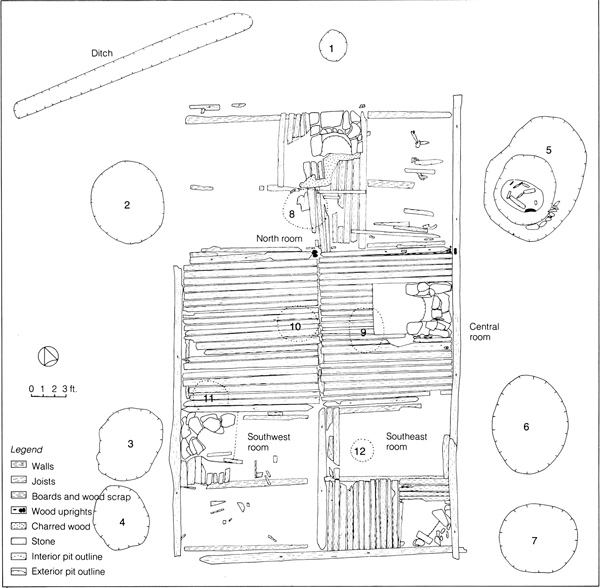|
|
 |
Canadian Historic Sites: Occasional Papers in Archaeology and History No. 26
Analysis of Animal Remains from the Old Fort Point Site, Northern Alberta
by Anne Meachem Rick
Introduction
The Old Fort Point site is located in the Boreal Forest Region of
Canada on the south shore of Lake Athabasca at the lake's western end,
58°39'4" N. latitude, longitude 110°36'12" W. The site sits on the
northern tip of the peninsula called Old Fort Point, near the edge of a
fifteen-foot-high bluff overlooking the lake.
Archaeological work, essentially an excavation of the entire
habitation area, took place during 1971 under the direction of Karlis
Karklins, National Historic Parks and Sites Branch, Parks Canada, whose
report also appears in this issue. Excavation was by trowel and shovel;
some dirt was sifted through window screen mesh when concentrations of
small artifacts were found. Remains consisted of the foundation of a
four-room building and 12 pits (five sub-floor pits within the building
and seven exterior pits) associated with the structure (Fig. 1).
Stratigraphy was poor and consisted of an artifact- and fauna-producing
layer less than one foot deep overlain by a stratum of decaying vegetal
material deposited after abandonment of the site. Pits contained up to
two feet of fill. Archaeological evidence indicates that only a single,
short occupation occurred at the site.

1 Plan of the Old Fort Point site. 1, north pit; 2, northwest
pit; 3, north-southwest pit; 4, south-southwest pit;
5, northeast pit; 6, north-southeast pit; 7,
south-souheast pit; 8, north room pit; 9, east-end
central room pit; 10, centre central room pit; 11,
southwest corner central room pit; 12, southeast room pit.
(Drawing by Ellen Lee) Copy for Fig. 1. (click
on image for a PDF version.)
|
The site was known to be associated with the fur trade but its exact
identity was uncertain until archaeological and faunal studies were
completed. Final analyses show that the site is probably Fort Wedderburn
II, a Hudson's Bay Company post. The original post (Fort Wedderburn I)
was located on Potato Island near Fort Chipewyan but in October 1817,
the entire establishment moved to Old Fort Point in order to be closer
to a good fishery. There it remained until the end of March 1818, when
the fort was reestablished on Potato Island. Thus Fort Wedderburn II at
Old Fort Point existed for only about six months.
A total of 2,251 fish bones, 57 bird bones, 365 mammal bones, one
bone of uncertain class and two freshwater mussel fragments comprise
the faunal remains studied, a rather small assemblage. Archaeologists
saved all bird and mammal bones they found but discarded many fish bones
that were in poor condition; therefore the 2,251 fish bones are a
selection from the fish material and do not represent the total number
originally recovered. Twenty-seven mammal and five fish bones found in
the layer of decaying vegetation overlying the site have not been
included in this report because they probably represent later activity at
this locality having nothing to do with the 1817-18 occupation.
Sixty-five fish scales were recovered and do belong to the 19th-century
occupation but are considered beyond the scope of this report and
therefore are not discussed further. A long
bone shaft found in the north room sub-floor pit may be from a small
bird or a small mammal. It has been listed as "class uncertain" in the
tables.
|
 |
 |
|

